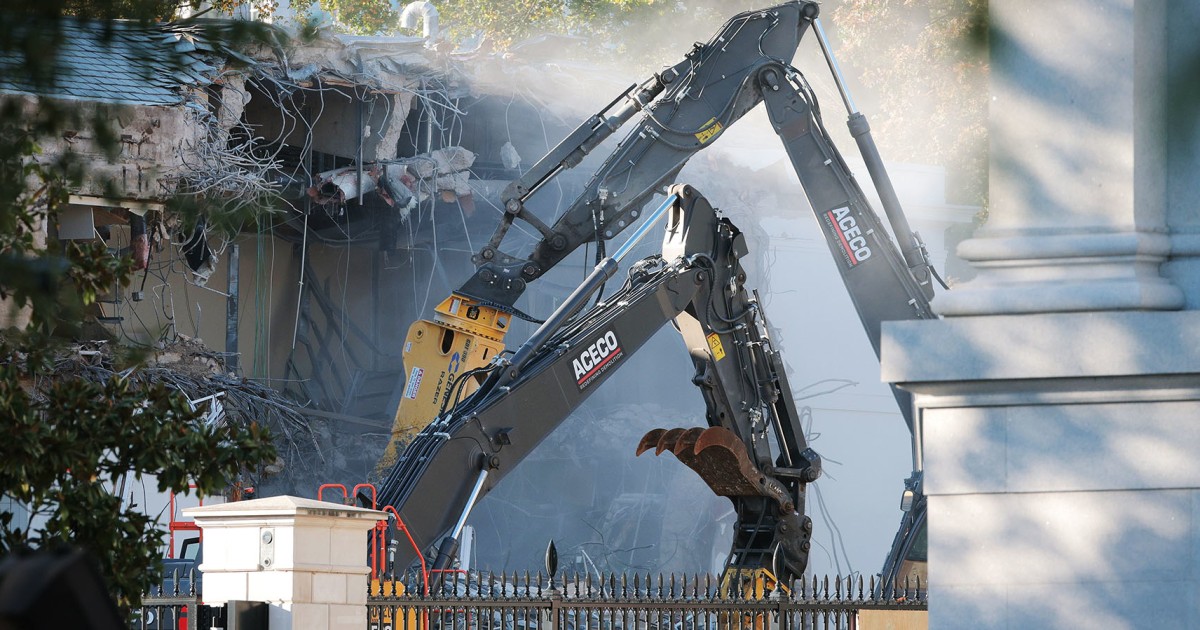Construction crews on Monday started demolishing part of the East Wing of the White House as part of President Donald Trump’s project to build a new ballroom, according to an administration official.
The unexpected removal of the facade comes after Trump said in July that the project “won’t interfere with the current building.”
“It’ll be near it, but not touching it, and pays total respect to the existing building, which I’m the biggest fan of,” Trump said at the time.
The White House did not immediately respond to questions from NBC News about how much of the structure they plan to demolish and why it’s happening after earlier Trump’s insistence that the White House itself wouldn’t be touched.
The Washington Post was first to report on the demolition.
Construction of the ballroom began last month. At a White House event Monday, Trump referred to the project saying, “We’re building right behind us. We’re building a ballroom.”
“I didn’t know I’d be standing here right now, because right on the other side, you have a lot of construction going on, which you might hear periodically,” Trump told attendees at Monday’s event.
On Truth Social later, Trump said that the East Wing would be “fully modernized as part of this process,” calling its construction “the new, big, beautiful White House Ballroom,” which he said was “completely separate from the White House itself.”
The East Wing is connected to and part of the White House complex. It has typically been used by the first lady and her staff; several aides relocated their workspaces in advance of the demolition.
Trump last month said that the ballroom will hold up to 900 people, exceeding the original planned capacity of the room of 650 by nearly 40%. The president has said that he will personally help pay for the White House addition, with the help of private donors. The price tag was initially estimated at $200 million.
But at a dinner for top donors to the ballroom last week, Trump confirmed the new price tag is around $250 million.
Trump has lamented that for events too large for the White House to accommodate, guests are usually hosted under tents pitched at the South Lawn, telling NBC News over the phone in July, “When it rains or snows, it’s a disaster.”
The project could be the biggest physical change to the White House since the 1940s, when President Franklin D. Roosevelt expanded the East Wing in 1942, followed by President Harry Truman adding an eponymous balcony on the South Portico in 1948.
White House chief of staff Susie Wiles said in a statement this year that officials will meet with “appropriate organizations” to keep the White House’s “special history” intact. Trump has held meetings with White House staff, the National Park Service and others in past months.
At least one lawmaker has expressed opposition to the change and the private funding for the renovation. Rep. Mark Pocan, D-Wis., has said that the plans should have come before Congress for discussion.



